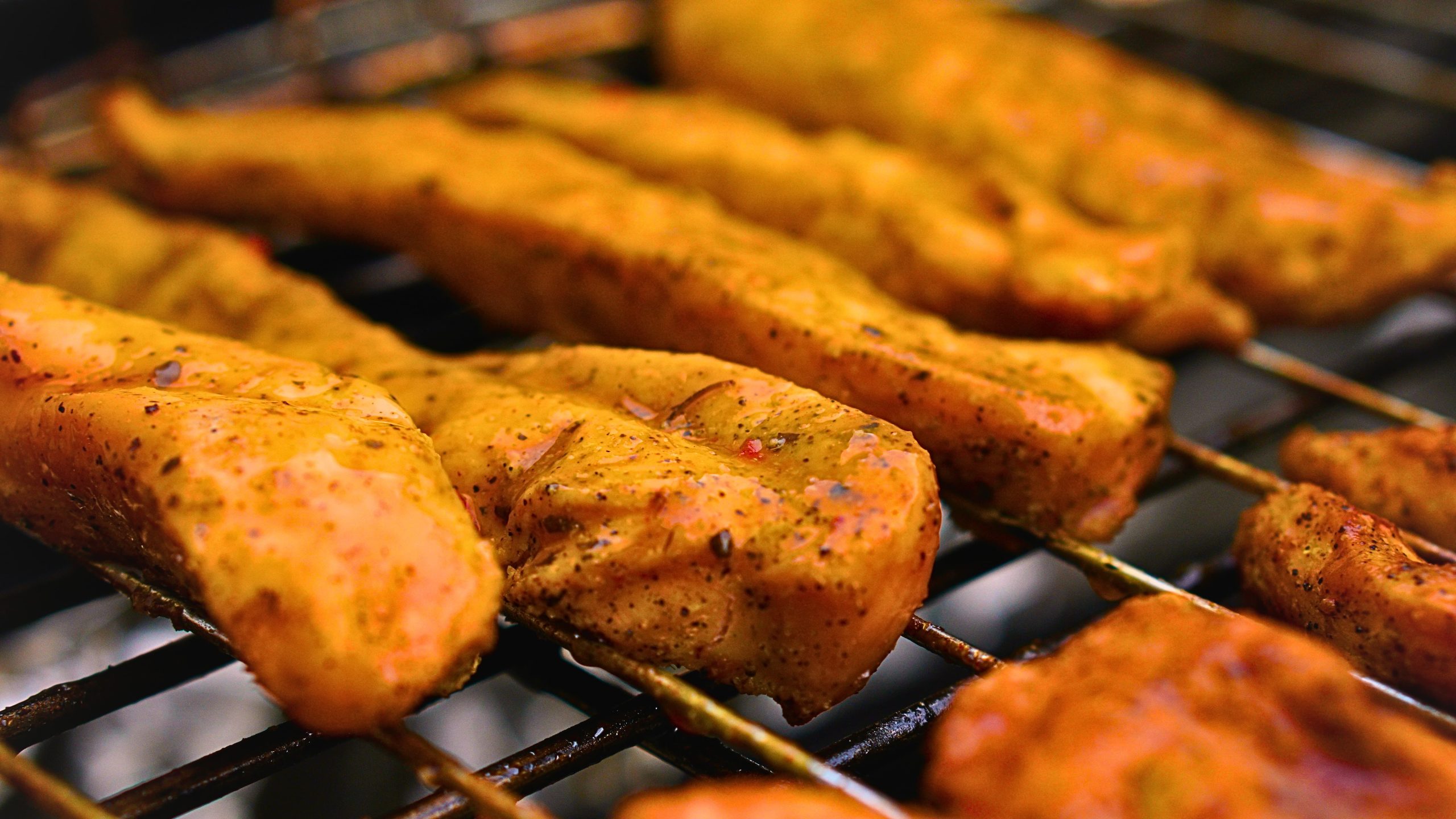Anyone who’s ever cut into a chicken sausage too soon knows that moment of doubt-is it really done? Pale pink centers and squishy textures make it tricky to tell, and there’s no room for guesswork when it comes to chicken. Raw or undercooked chicken sausage isn’t just unappetizing, it’s dangerous. Those innocent-looking links need to hit 165°F (74°C) inside to kill off nasty bacteria like Salmonella and Campylobacter that could ruin more than just dinner. While a good meat thermometer’s the surest bet, knowing what to look for-from texture to color to cooking technique-makes all the difference between a perfectly cooked sausage and a food safety gamble.
Key Takeaway
- Undercooked chicken sausage is soft, pinkish inside, and may have pink juices running.
- It must reach 165°F (74°C) internally to kill bacteria like Salmonella and Campylobacter.
- Use a meat thermometer and cook evenly by turning to avoid undercooking.
Chicken Sausage Undercooked: Cooking Status and Safety Requirements
Raw chicken sausage might not seem like a big deal until you see what happens next. If you’ve spent any time around a grill or stovetop, you know the signs the squishy feel when you press it, almost like pushing your thumb into a raw chicken breast. It just feels wrong. Inside, the meat has this unsettling pinkish hue, and when you poke it with a fork, pink juice oozes out instead of running clear. That’s a dead giveaway.You can’t mess around with chicken sausage temperatures; it needs to reach 165°F (or 74°C) for a good reason. Those tiny troublemakers, Salmonella and Campylobacter are lurking inside, just waiting for someone to undercook their meal. A decent meat thermometer is worth every penny because trying to eyeball it just doesn’t work.People often get this wrong, usually because they’re in a rush or have turned the heat up too high. The outside may look perfectly browned while the inside is still trying to pass for raw meat. That’s not good.The solution is simple: use medium heat and keep turning those links like you’re watching a slow-motion tennis match. It doesn’t matter if you’re grilling, baking, frying, or boiling or even preparing chicken sausage linguine. Just keep a close eye on the time and temperature. Some things in the kitchen you can wing it with, but this isn’t one of them.
Health Risks and Indicators of Undercooked Chicken Sausage

Credit: wikiHow
Eating undercooked chicken sausage isn’t just unpleasant; it can be quite dangerous.
The primary risk comes from bacteria such as Salmonella and Campylobacter, which can survive if the sausage hasn’t been cooked to a safe temperature.
These bacteria can lead to food poisoning, resulting in symptoms like nausea, vomiting, diarrhea, cramps, and fever.
In some cases, the illness can be severe enough to necessitate medical attention.
You can often identify undercooked chicken sausage by its taste and smell.
Typically, undercooked sausage has a bland flavor or a raw chicken taste, which is a significant warning sign.
It may also emit a faint raw poultry odor, rather than the fresh or smoky scent you’d expect from properly cooked sausage.
Visually, the main indicators include a pinkish interior and juices that aren’t clear.
If you cut into the sausage and notice pink or red juices, it’s a clear sign that it needs more cooking. The texture should be firm and springy, not soft. Whether you’re making a quick snack or a hearty chicken sausage and white bean stew.
If you find yourself with undercooked sausage, the best course of action is straightforward: continue cooking until the internal temperature reaches 165°F (74°C).
After cooking, allow the sausage to rest for a few minutes. This resting period helps the heat distribute evenly and allows the juices to redistribute, enhancing both safety and flavor.
Methods to Determine Doneness of Chicken Sausage

Storage and Handling Advice for Undercooked Chicken Sausage
If you find your chicken sausage is still pink inside, don’t worry! Just pop it in the fridge right away to slow down any unwanted bacteria. The key is not to leave it sitting out on the counter. Here’s how to fix undercooked sausage:
- Put it straight in the fridge.
- Reheat it when you’re ready.
- Make sure it reaches a temperature of 165°F (74°C).
- Always use your thermometer.
Being cautious with chicken sausage goes beyond just cooking. Here are some important storage rules:– Keep raw sausages in the freezer or fridge.– Thaw them in the fridge, not on the counter.– Store leftovers in sealed containers.– Use them within 3-4 days.And here are some smart handling tips:– Keep raw sausage separate from other foods.– Clean your cutting board immediately after use.– Wash your hands between tasks.– Use different plates for raw and cooked meat.Nobody wants to deal with spoiled chicken. It’s no fun at all. But these steps are straightforward and just make sense. Think of your thermometer as your trusty kitchen companion that always knows when the meat is done. And remember, when reheating leftovers, don’t skip the temperature check.The same rule applies. 165°F is your magic number. It might seem excessive, but when it comes to food safety, it’s always better to be safe than sorry. (2)
FAQ
How can I use a chicken sausage thermometer reading or temperature probe to know the chicken sausage cooking temperature is safe?
Checking chicken sausage internal temperature is the most reliable way to avoid undercooked chicken sausage risks. A safe cooking temperature chicken sausage should reach is 165°F. Using an instant read thermometer chicken sausage tool or checking a chicken sausage temperature chart can confirm doneness and prevent chicken sausage food poisoning.
What signs of undercooked chicken sausage should I watch for, like chicken sausage pink inside or raw inside?
Knowing how to tell if chicken sausage is undercooked matters for chicken sausage safety guidelines. Look for changes in chicken sausage juice color, cooked chicken sausage texture, and chicken sausage casing splitting test results. These signs help avoid salmonella in chicken sausage or campylobacter in chicken sausage, reducing the risk of foodborne illness from chicken sausage.
How long to cook chicken sausage and what are the best cooking methods for even doneness?
Cooking chicken sausage thoroughly means using proper handling of chicken sausage and following chicken sausage temperature guidelines. Whether it’s air fryer chicken sausage cooking time, oven cooking temperature for chicken sausage, chicken sausage grill temperature, or cooking chicken sausage in a skillet, cooking chicken sausage evenly is key. Thawing chicken sausage before cooking also avoids fast cooking risks.
How can I prevent chicken sausage food poisoning and other common chicken sausage bacteria risks?
To avoid chicken sausage cross contamination, follow chicken sausage safe eating practices and chicken sausage food safety tips. Watch for chicken sausage food poisoning symptoms and signs of foodborne illness.Understanding uncooked poultry dangers, dangers of undercooked poultry sausages, and chicken sausage pathogen control helps make chicken sausage safe to eat.
What’s the difference between chicken sausage overcooked vs undercooked, and what cooking mistakes should I avoid?
Chicken sausage overcooked vs undercooked differences show in chicken sausage texture when cooked, chicken sausage juice clarity test, and poke test for chicken sausage. Avoid chicken sausage cooking mistakes by using chicken sausage heating tips, chicken sausage preparation tips, and chicken sausage temperature guidelines. Proper food safety for poultry sausages ensures microbiological safety.
How should I store chicken sausage to keep it safe before and after cooking?
Chicken sausage storage safety includes knowing chicken sausage shelf life after opening, chicken sausage freezing and cooking steps, and thawing chicken sausage before cooking.Proper chicken sausage storage prevents common chicken sausage bacteria from growing. Following chicken sausage meal safety tips and chicken sausage additives and safety guidelines can help prevent illness.
Conclusion
Chicken sausage is tasty and versatile, but undercooking is a common mistake with real risks. It’s easy to get fooled by pink color or soft texture, but those are signs to take seriously. A meat thermometer is the simplest and surest way to avoid those problems.Cooking chicken sausage to 165°F (74°C) kills harmful bacteria and makes the sausage firm, juicy, and flavorful. Turn the sausage regularly during cooking to heat it evenly and avoid burnt outsides with raw middles. Let it rest a few minutes after cooking to finish the process gently.If you ever spot undercooked sausage, don’t eat it. Refrigerate and reheat properly. And always store raw sausage carefully to prevent contamination.You don’t have to be a chef to cook chicken sausage safely. Just keep these simple tips in mind, and you’ll enjoy delicious, safe meals without worry.Ready to cook your chicken sausage perfectly every time? Grab a meat thermometer, keep an eye on the heat, and turn those sausages often. Your taste buds and your stomach will thank you.
References
- https://www.catchgrowcook.com/4-ways-to-tell-if-chicken-sausage-is-cooked/
- https://www.fsis.usda.gov/food-safety/safe-food-handling-and-preparation/meat-catfish/sausages-and-food-safety
Related Articles
- https://milkwoodrestaurant.com/chicken-sausage-linguine-recipe/
- https://milkwoodrestaurant.com/chicken-sausage-and-white-bean-stew/
- https://milkwoodrestaurant.com/chicken-sausage-meaning/








